Belle Gibson and other fraudsters who faked their way to a fortune
Spectacular scammers
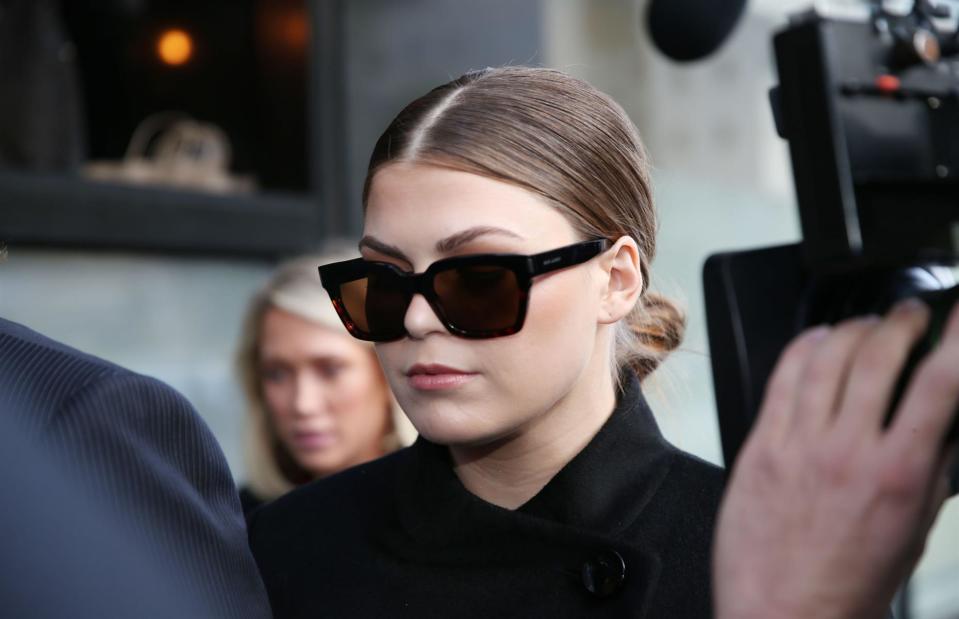
Australian Associated Press/Alamy Stock Photo
Despite the havoc they wreak, the fraudsters at the centre of famous cases tend to fascinate the public. In recent years, a slew of documentaries have illuminated some of history's most infamous con artists, with Instagram's Worst Con Artist, focusing on the exploits of Belle Gibson (pictured), the latest in a long line of exposes.
From the Tinder Swindler to the inspiration behind Catch Me If You Can, read on to discover the notorious scammers who lied and cheated their way to the high life – often destroying other people's lives along the way.
All dollar amounts in US dollars unless otherwise specified, and historic currency conversions correct for the time.
Anthony Gignac
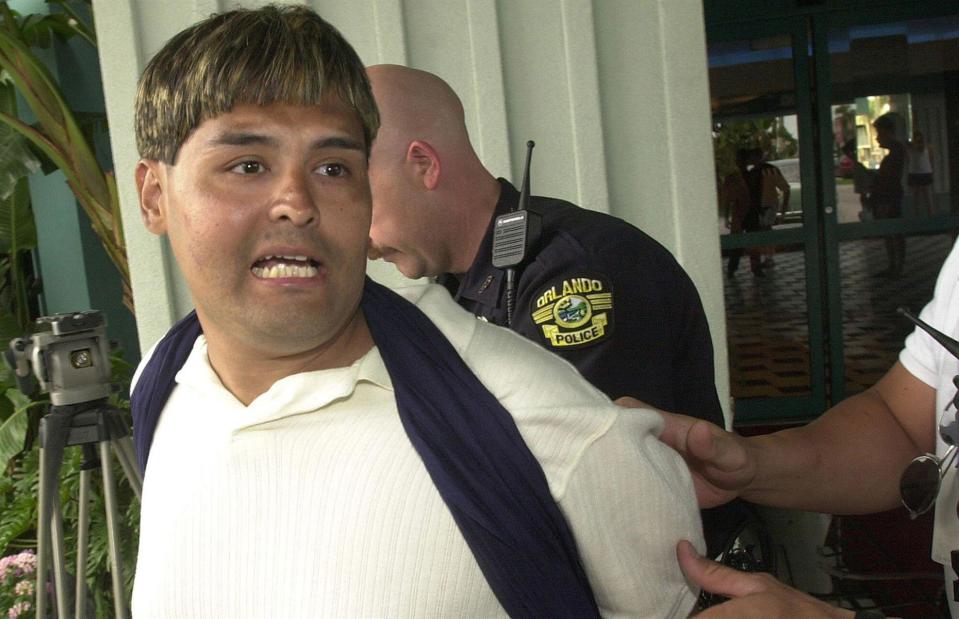
Sipa US/Alamy Stock Photo
Miami fraudster Anthony Gignac went by the name Prince Khalid al-Saud of Saudi Arabia for over three decades, swindling people out of over $8 million (£6.4m) by posing as Middle Eastern royalty. He was arrested several times in the 90s and 00s – this picture shows him being arrested by police in Orlando, Florida – but after serving several short jail sentences, he continued his life of crime.
Gignac documented his life of luxury on Instagram under the moniker @princedubai_07 – showing off fast cars, expensive watches and bottles of champagne. He referred to himself as "sultan", "prince" and "his royal highness" and lived in Miami's exclusive Fisher Island.
Gignac used his fake royal persona to convince people to invest in non-existent ventures around the world, but in 2017, his scam began to unravel for good...
Anthony Gignac
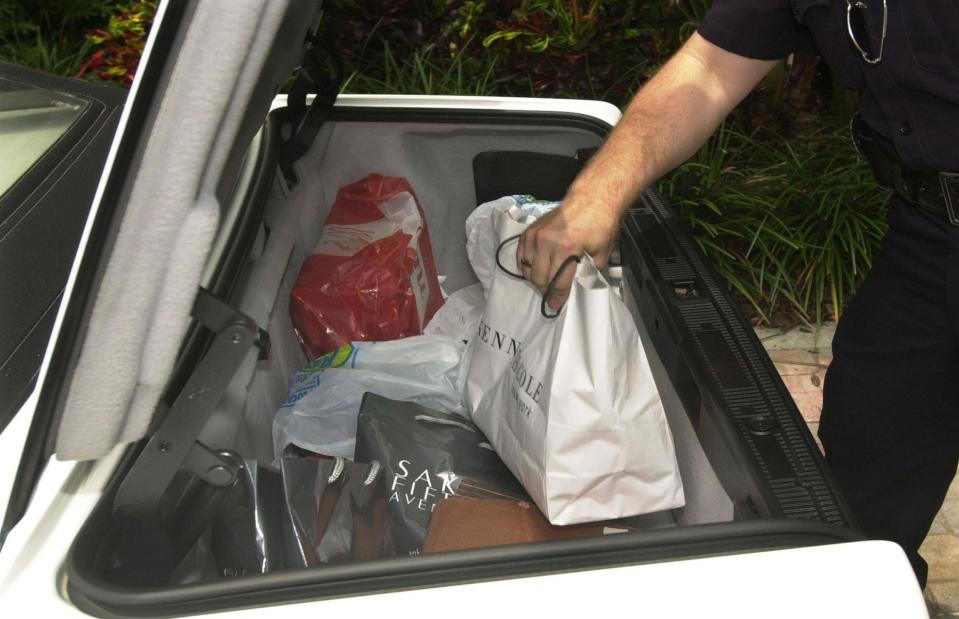
Sipa US/Alamy Stock Photo
It turned out Gignac was actually born in Colombia before being adopted by a family in the US state of Michigan and had started impersonating a Saudi royal when he was just 17.
In May 2019, Gignac was sentenced to 18 years and eight months in prison after admitting wire fraud, conspiracy to commit wire fraud, aggravated identity theft, and impersonating a diplomat. US Attorney Fajardo Orshan said Gignac had sold "false hope" to dozens of unsuspecting investors. Gignac took full responsibility for the operation at his sentencing but insisted: "I am not a monster". In September 2019, a court ruled the fake sultan must pay back his victims $7 million (£5.7m).
The picture shows police raiding his car in 2002, after arresting him for fraudulently using credit cards.
Jon Harder
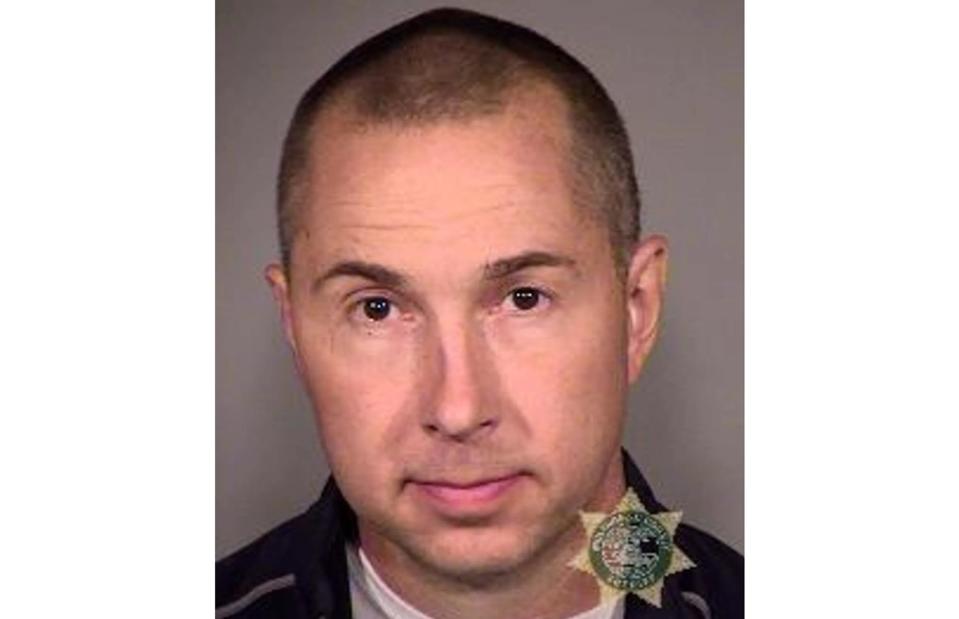
Courtesy Multnomah County Sheriff's Officer
Jon Harder (pictured) was found guilty of "one of the largest fraud schemes in Oregon history" and sentenced to 15 years in prison back in 2015. His crime? Defrauding over 1,000 investors of around $130 million (£103m).
Harder was the CEO of Sunwest Management, a business that managed 300 assisted living facilities. Although the company was losing millions of dollars, Harder told investors that Sunwest was incredibly successful. The deceit resulted in backers ploughing a fortune into the failing firm – but instead of using the money to prop up the business, Harder "laundered the proceeds of this fraud by diverting large amounts of money to support his lavish lifestyle", according to the Oregon District Attorney's office.
Jon Harder

Spencer Platt/Getty Images
Harder was found guilty of 56 counts of mail fraud, wire fraud, and money fraud and sent to jail to serve his 15-year sentence. But in 2021, on the last day of his presidency, Donald Trump commuted Harder's penalty, claiming he "fully accepted responsibility, pled guilty, and cooperated with the government’s civil and criminal actions against him at great personal cost."
It's not been all plain sailing for Harder. He may have left jail, but in October last year, the conman was ordered to repay over $74 million (£59m) to around 1,400 investors.
Frank William Abagnale Jr
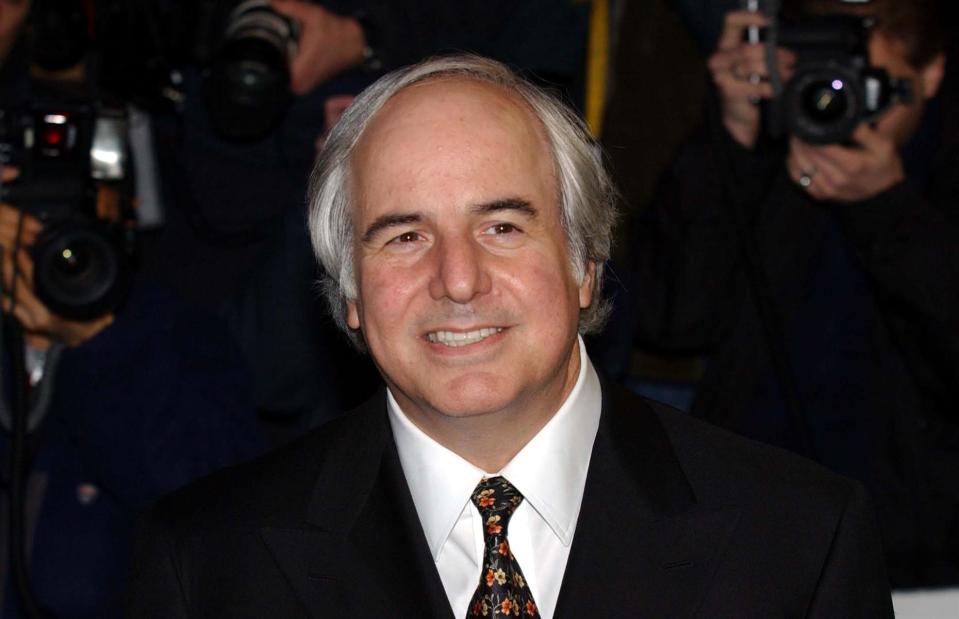
PA Images/Alamy Stock Photo
Conman extraordinaire Frank William Abagnale Jr started posing as a Pan Am airline pilot at the age of just 16, clocking up over a million miles on more than 250 flights to some 26 countries. Over the next few years, he went on to impersonate a doctor and a lawyer, although it's worth noting that the second position wasn't entirely fake – he did pass a bar exam. He also became a master at forging cheques.
Abagnale was finally caught in France in 1969, aged just 21. He served six months in a French jail and another six in Sweden before being extradited to the US. He was sentenced to another 12 years in a federal prison before being paroled after five years – despite two escape attempts. His release was made on the condition that he help federal authorities identify cheque forgers.
Frank William Abagnale Jr
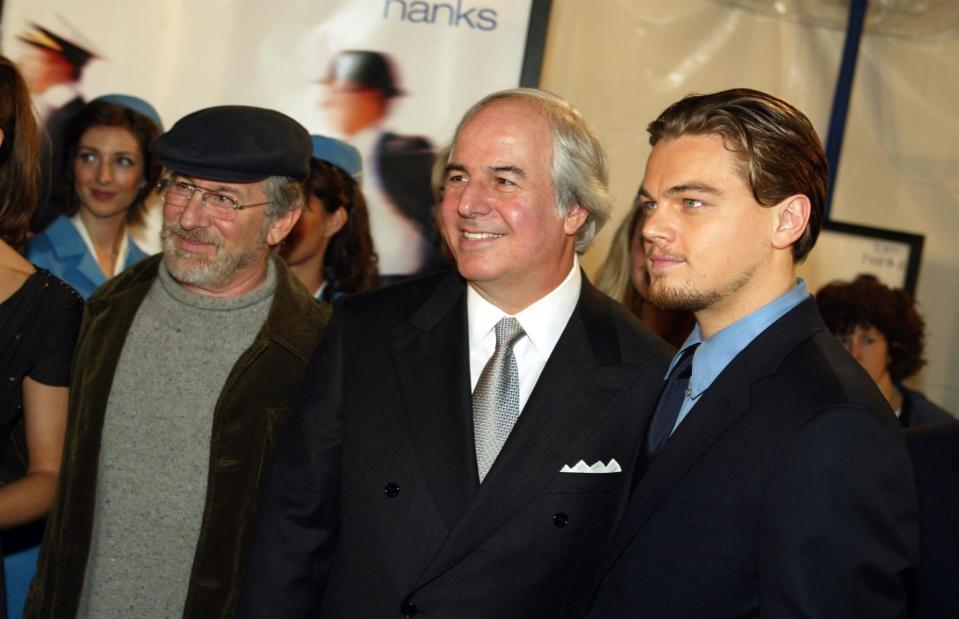
Kevin Winter/ImageDirect via Getty Images
Abagnale eventually managed to use his skills as a conman to forge a legitimate career as a security consultant, advising banks and businesses on how to avoid fraud.
His story was immortalised in the book Catch Me If You Can, which was turned into a movie directed by Steven Spielberg and starring Leonardo di Caprio as Abagnale during his years as a Pan Am pilot. Both are pictured here with the man himself.
Peter Foster
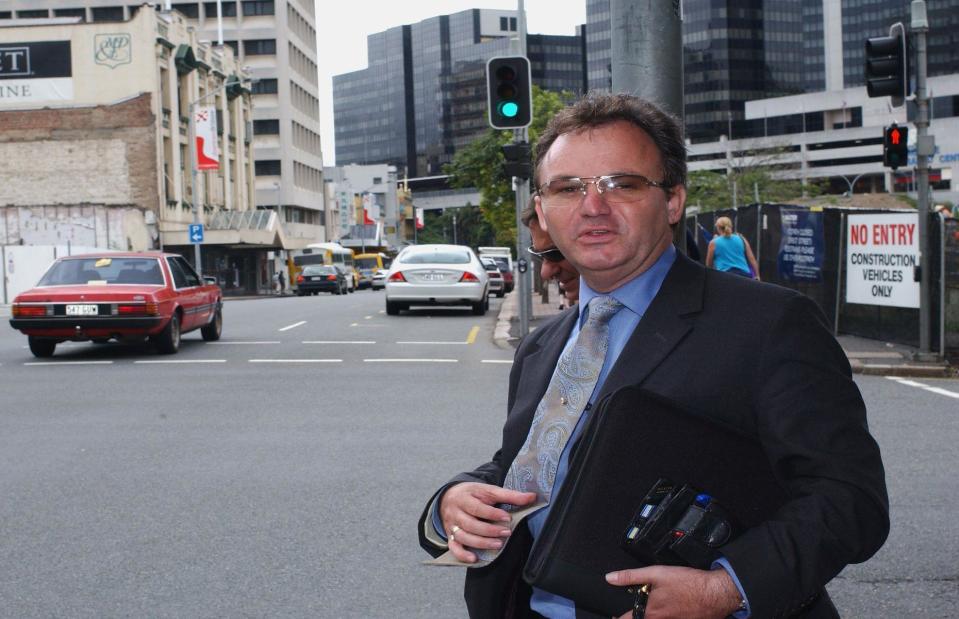
Darren England/Getty Images
Australian fraudster Peter Foster has described himself as "an international man of mischief", but the charges against him are more serious than his self-styled nickname implies. Aged 20 in 1983, Foster was fined for insurance fraud and has since gone to prison in Australia, the UK, the US, and Vanuatu for his role in various scams.
In the late 80s, Foster sold "slimming tea" and marketed it as an "Ancient Chinese diet secret". He hired the British glamour model Samantha Fox to promote the tea and confessed he "made millions". When regulators tested the drink, however, they found it was hiding another secret: it was standard black tea, which Foster was selling for a huge mark-up.
He was fined £5,000 in 1988, the equivalent of $20,500k (£17k) today. But this didn't stop him from attempting to remarket the shady product in America under the name Chow Low Tea. Again, Foster was found out and fined. He was also ordered to serve his first prison sentence, a four-month stint in a Los Angeles jail.
Peter Foster
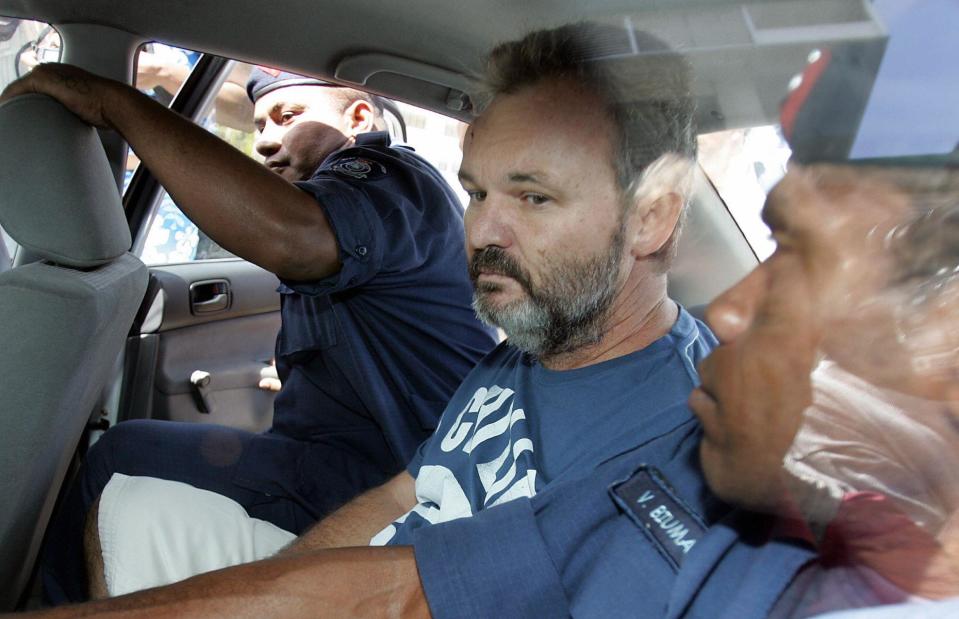
TORSTEN BLACKWOOD/Getty Images
But prison proved to be no deterrent. Throughout the 1990s and early 2000s, Foster was accused of acting as the marketing director of Renuelle, a company that sold slimming pills, and also made headlines when it was revealed he'd helped Cherie Blair, the wife of Britain's then-prime minister Tony Blair, buy two apartments in Bristol at a heavily discounted price. He met the Blairs through his partner Carole Caplin, who worked as Cherie's style adviser.
For almost 40 years, Foster moved between Australia, the UK, the US, and Fiji – scamming people wherever he went. In 2003, an Australian court found that Foster had made around AU$4 million ($4.4m/£3.5m in today's money) from 70 people who paid up to AU$42,000 each for the right to distribute yet another brand of diet pills. Four years later, he was arrested for entering Vanuatu illegally by boat. He's since been arrested three more times, most recently on 7 December 2021, for taking part in a sports trading scam. Foster was caught in Victoria after spending six months on the run.
Robert Hendy-Freegard
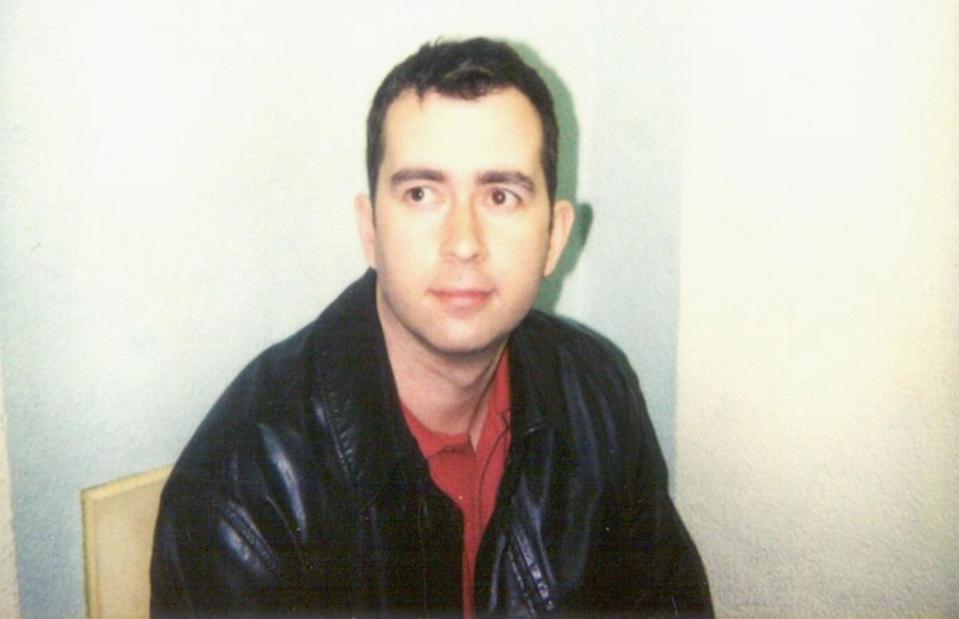
Handout/Getty Images
One of the most sinister scams on this list was carried out by Robert Hendy-Freegard, a former bartender who posed as a UK MI5 agent for over 10 years. Known as "the Puppet Master", Hendy-Freegard stole around $1.35 million (£1m) from more than seven victims, mostly women. But he didn't just make them hand over money. By pretending to recruit people for UK security service MI5 or claiming terrorists were pursuing them, he manipulated his victims into leaving their families and carrying out extreme tests of loyalty that included getting beaten up and lying to police.
Hendy-Freegard was simply known as Robert Freegard before starting a relationship with one of his victims, Maria Hendy, and adding her surname to his. He persuaded Hendy and two of her friends, Sarah Smith and John Atkinson, to go on the run with him, supposedly to escape IRA terrorists. Between them, Smith and Atkinson handed over $875,000 (£700k) for "witness protection". Hendy-Freegard reportedly used this money to finance a luxury lifestyle, buying himself Rolex watches, expensive cars, and trips to Europe while his victims had to remain in hiding.
Robert Hendy-Freegard
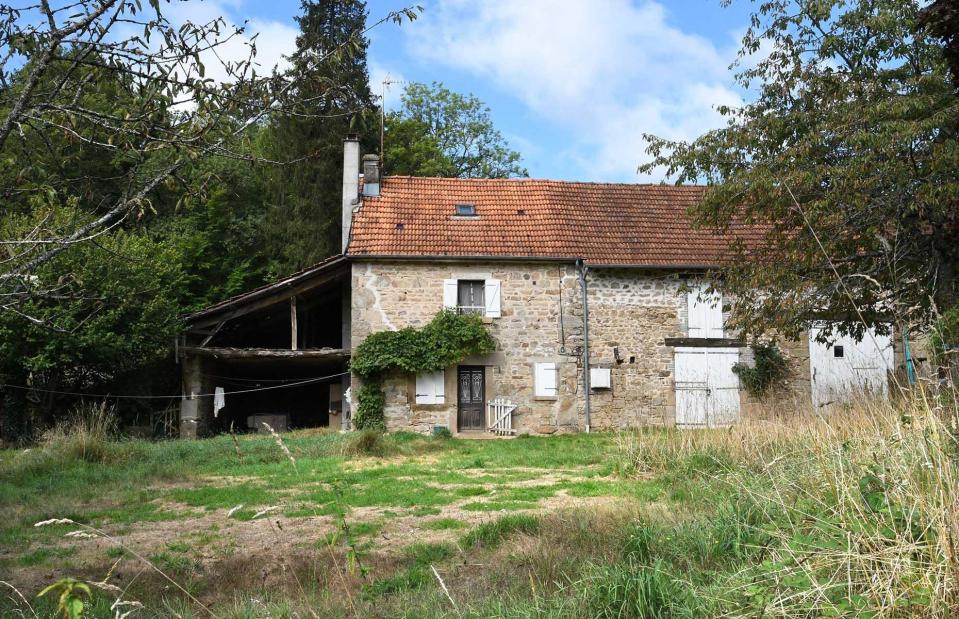
MAXPPP/Alamy Stock Photo
Hendy-Freegard was eventually caught in 2003 after Atkinson decided to get back in touch with his family. The conman was sentenced to life in prison in 2005, but after appealing the verdict his sentence was reduced, and he was released in 2009.
In 2012, he met mother-of-two Sandra Clifton on a dating site, using the name David Hendy. Two years later, the pair disappeared. Clifton's two children featured heavily in the Netflix series The Puppet Master, which explores Hendy-Freegard's elaborate hoaxes and the hunt to track him down. And now police have once more caught up with the conman, who was arrested in Belgium in 2022 after attempting to run over two police officers who were raiding his French home (pictured).
Christophe Rocancourt

Valery Hache/AFP/Getty Images
French confidence trickster Christophe Rocancourt, pictured here with supermodel Naomi Campbell at Cannes in 2008, reportedly made at least $40 million (£32m) by ripping off the rich and famous. He's perhaps best known for his US scams in the 1990s, when he posed as everything from a French member of the Rockefeller family to a movie producer. Rocancourt also lived off actor Mickey Rourke, fathered a son with a Playboy model, and talked Jean-Claude van Damme into producing a non-existent film.
But the truth caught up with Rocancourt in 2001, when he was arrested in Canada after skipping bail in New York over an unpaid hotel bill...
Christophe Rocancourt

Newsmakers/Getty Images
The Frenchman, then posing as a racecar driver, admitted cheating a businessman out of $100,000 (£80k) and served a year in a Canadian jail before being extradited to the US. In 2003, Rocancourt – who also once claimed to be the son of Sophia Loren – was jailed for nearly four years after pleading guilty to US federal fraud charges.
Rocancourt became famous as the "conman of the stars" and even wrote about his life as a scammer in a series of books, including one called I, Christopher Rocancourt, Orphan, Playboy, Prisoner, which is set to be adapted into a film, according to reports. And his life back in France, where he went after being released in the US, is no less colourful. His name has since popped up in relation to a series of scandals including a dispute with a film director, a fake document probe, and a heist on a French police HQ.
Anne and John Darwin
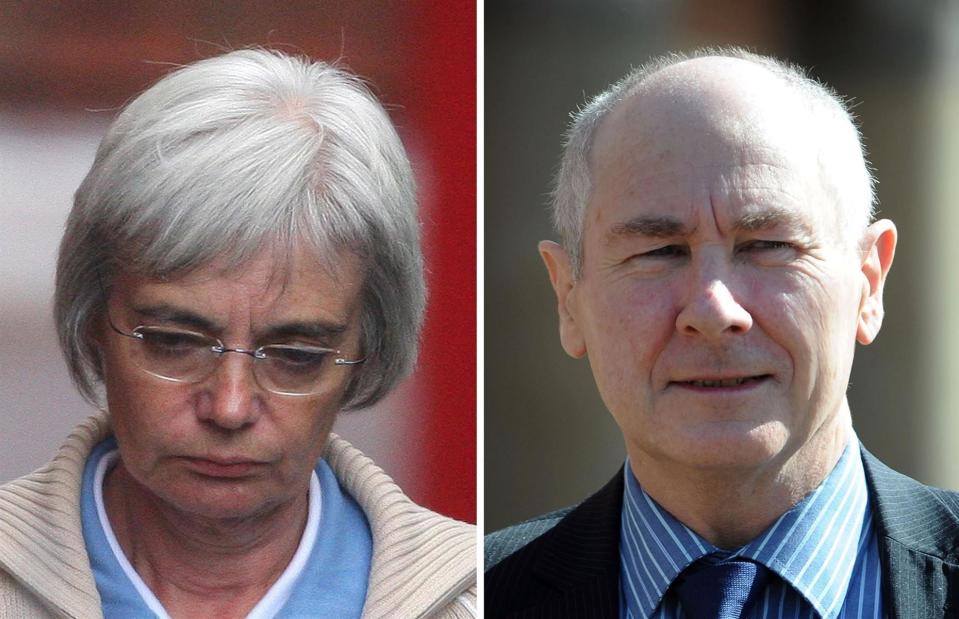
PA Images/Alamy Stock Photo
The inspiration behind the TV movie The Thief, His Wife and the Canoe, canoeist John Darwin and his wife Anne became famous after coming up with an elaborate ruse to escape financial difficulty by faking his death off the north-east coast of England. In 2002, Darwin paddled out to sea and faked a canoeing accident so his grieving wife could claim $270,000 (£217k) in life insurance payments. After a while, they would start a new life in Panama, leaving their two grown-up sons to mourn their dead father while he hid in a bedsit next door to Anne.
The Darwins' ruse worked for four years and the couple moved to Panama, with John using a passport in a dead baby's name. He then decided to return to the UK after a change in the Panamanian visa laws, walking into a British police station claiming he had amnesia and didn't remember a thing about the previous few years.
Anne and John Darwin
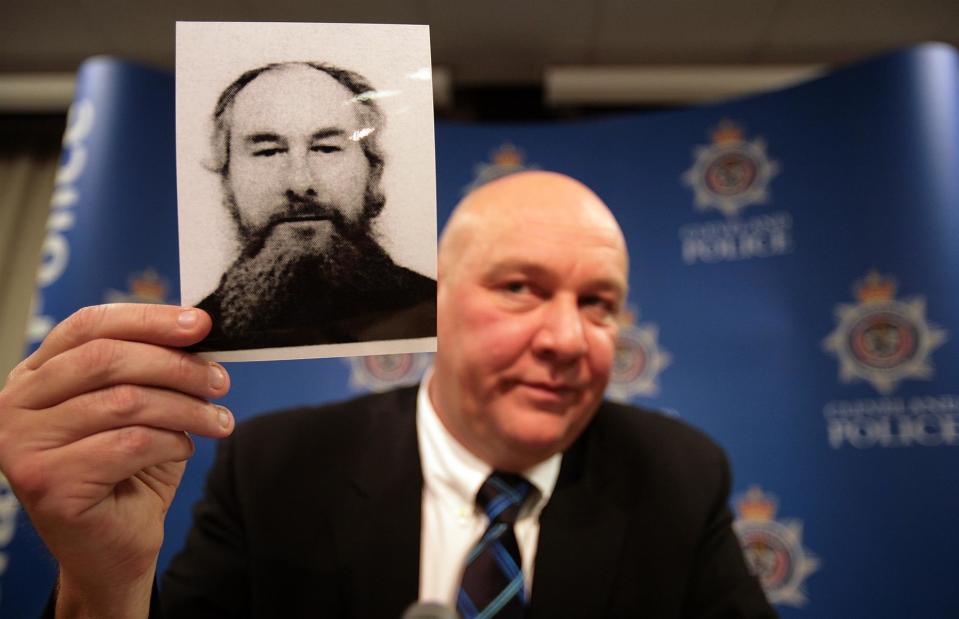
Christopher Furlong/Getty Images
But the couple's scam was rumbled when a time-stamped photo of him in a Panama estate agents was found online.
Darwin was arrested, charged and eventually jailed for six years and three months after admitting fraud and falsely obtaining a passport. Anne also returned to the UK and was sentenced to six and a half years in jail on charges of fraud and money laundering. The couple served about half their sentences and later divorced. Darwin reportedly lives in the Philippines with his second wife, while Anne, who is reconciled with her sons, lives in Yorkshire.
Edward Putman
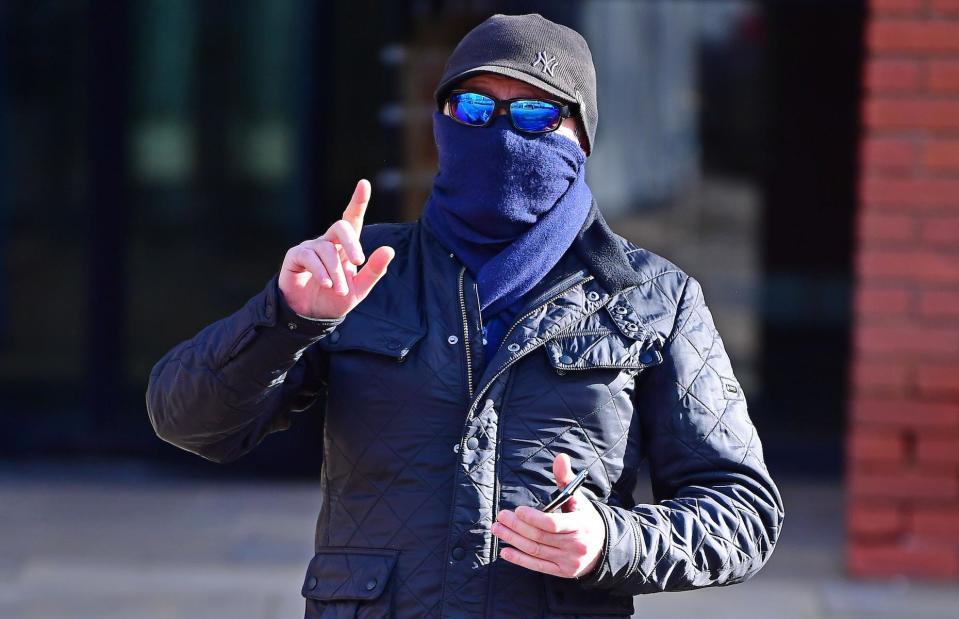
PA Images/Alamy Stock Photo
Edward Putman's scam went undetected for years. Authorities in the UK initially became suspicious when the British builder and convicted rapist failed to declare a lottery win while he was receiving benefit payments. However, it was only after the conman was convicted of benefit fraud that the actual fraud finally came to light: Putman had claimed a $3.1 million (£2.5m) jackpot by cashing in a fake lottery ticket.
Putman claimed he'd found the winning ticket under a seat in his van in 2009 and cashed it in just before the deadline. However, he conspired with a lottery insider, Giles Knibbs, who worked for lottery operator Camelot in the fraud detection department and knew how to cheat the system.
Edward Putman
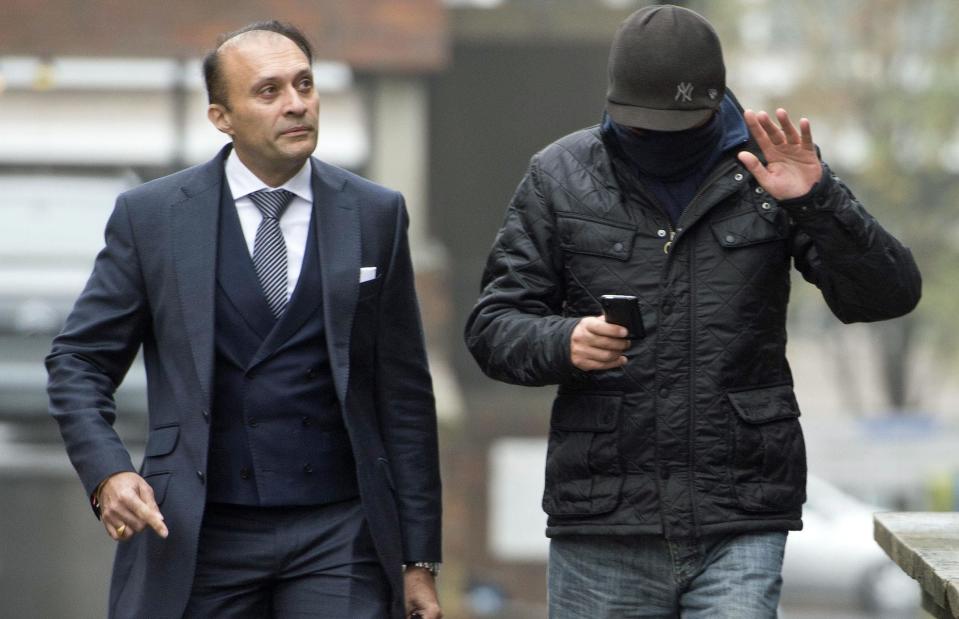
PA Images/Alamy Stock Photo
Putman paid Knibbs, who later confessed to the fraud and took his own life, a comparatively meagre $413,000 (£330k) for his part in the scam.
Meanwhile, he bought himself two sports cars as well as a house and surrounding land in Hertfordshire, living a millionaire lifestyle while continuing to apply for benefits and income support. He faced trial in 2019 and was sentenced to nine years behind bars for the lottery fraud.
Mark Acklom

Courtesy Avon and Somerset Police
For a year, fraudster Mark Acklom posed as a Swiss banker and MI6 spy to get his then-girlfriend Carolyn Woods to lend him her life savings to renovate several properties he owned. After promising to marry her and pocketing $375,000 (£300k) he disappeared, leaving his fiancé without any money. On the run, the conman changed his name several times: to Marc Ros Rodriguez, George Kennedy, and Zac Moss. He soon became one of the most wanted fugitives in the UK.
But this wasn't the first time Acklom had committed serious fraud. The notorious swindler had been jailed twice – the first time when he was only 18. At the start of his criminal career, Acklom stole his father's credit card and posed as a stockbroker to commit fraud. He splashed the money on a mortgage for a house and hired private jets, much to the shock of his parents.
Mark Acklom

PA Images/Alamy Stock Photo
Five years after he left fiancé Carolyn penniless, Acklom was spotted in Switzerland. He was finally arrested in a luxury apartment in Zurich in 2018, where he had been living under a false name. The conman was married to Maria Yolanda Ros Rodriguez, who was also using aliases, and the couple had two daughters together.
The fraudster was extradited to the UK, where he faced trial in the summer of 2019 and pleaded guilty to swindling his ex-girlfriend. The judge described his scam as "cruel and cynical". He was sentenced to five years and eight months in prison.
Belle Gibson
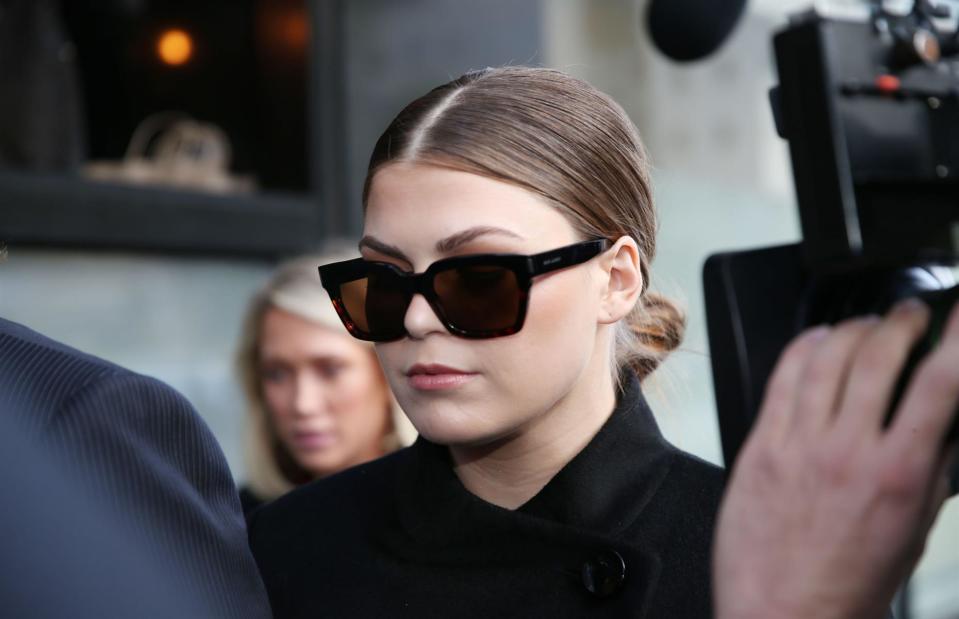
Australian Associated Press/Alamy Stock Photo
The subject of the ITV documentary Instagram's Worst Con Artist, Belle Gibson amassed a sizeable online following thanks to her wellness content on Instagram, becoming one of the social media site’s first major influencers. The Australian claimed that she cured her own brain cancer through diet and lifestyle alone and that she'd rejected medical interventions such as chemotherapy. The 21-year-old released a wellness app called The Whole Pantry in 2013, which was downloaded more than 200,000 times in its first month and quickly became the top-ranking app on Apple's App Store. The influencer also released a book of the same name, which featured recipes, detox tips, and beauty-enhancing advice. The app and book generated an estimated $1 million (£800k) in sales.
Suspicions about her work arose when an Australian publication revealed that profits were not going to charity as Gibson had originally purported, which prompted journalists to dig deeper into what the influencer was really up to…
Belle Gibson
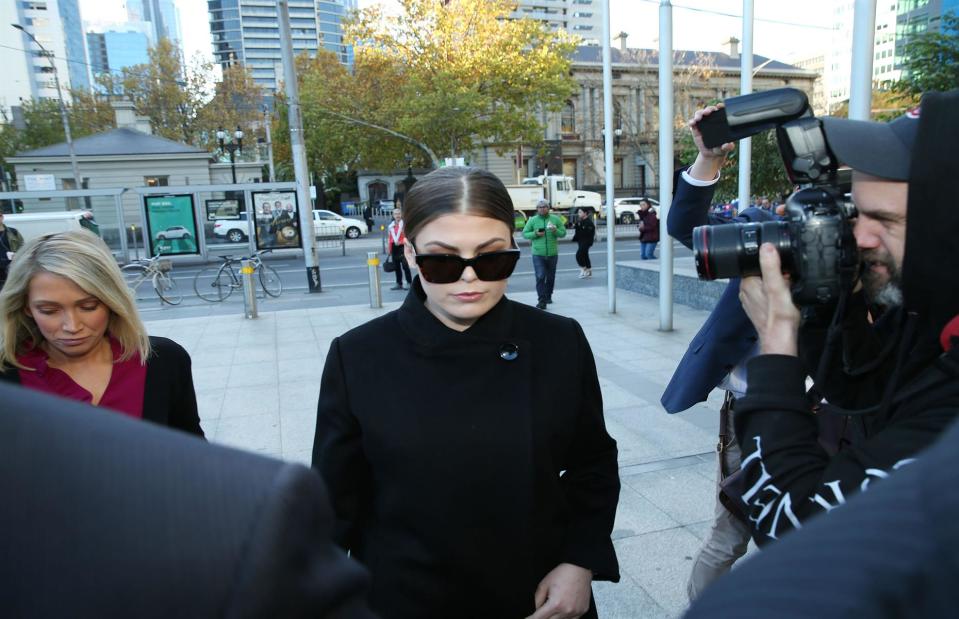
Australian Associated Press / Alamy Stock Photo
It turned out that Gibson did not have cancer and had never suffered from the disease, but she did have a history of lying about illnesses that dated back to 2009. Even after the truth was revealed, Gibson continued to make money from her scam – in 2016 she reportedly received AU$75,000 ($54k/£39k) for an exclusive interview with Australian broadcaster Nine for the current affairs show 60 Minutes. During the interview, Gibson said she was passionate about avoiding gluten, dairy and coffee but that she didn’t understand how cancer works.
In 2017, Gibson was fined AU$410,000 ($314k/£255k) for misleading her followers, and in May 2021 authorities began seizing her assets as the fine remained unpaid. Belle Gibson’s story is one many find highly disturbing, as her wide-reaching influence prompted swathes of people who were actually ill to stop their treatments in an attempt to imitate her fabricated recovery.
Gilbert Chikli and Anthony Lasarevitsch

Kenzo Tribouillard/AFP/Getty Images
For two years from late 2015, French-Israeli fraudsters Gilbert Chikli and Anthony Lasarevitsch scammed about €80 million ($89m/£67m) from wealthy individuals by pretending to be French defence minister Jean-Yves Le Drian (pictured). The pair used a silicone mask to impersonate Mr Le Drian, who has also served as France's foreign minister.
Victims of the bizarre scam thought the real Le Drian was contacting them to help pay ransoms for journalists held in the Middle East. As France doesn't pay ransoms, the scammers asked for funds to go into an untraceable Chinese account. It's never been explained why they chose to impersonate Le Drian, although it may be because, as defence minister, he was involved in securing the release of hostages.
Gilbert Chikli and Anthony Lasarevitsch
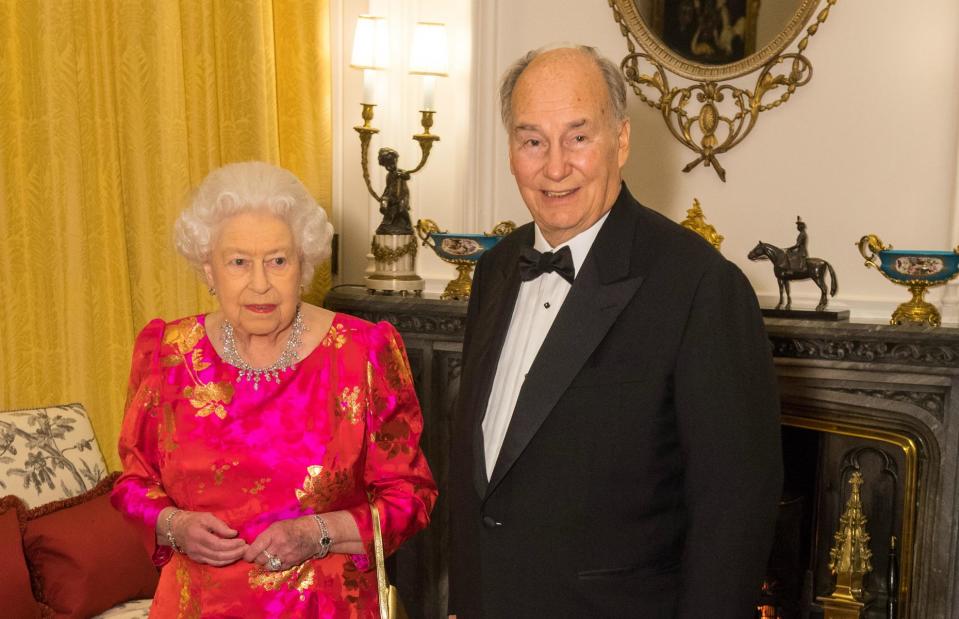
Dominic Lipinski-WPA Pool/Getty Images
While some identified the scam before it was too late, others weren't so lucky. Philanthropist and royal Aga Khan IV (pictured here with Queen Elizabeth II) lost as much as €18 million ($19.9m/£15.4m), while over €40 million ($44.3m/£34.2m) was handed over by an unnamed Turkish businessman.
In March 2020, after being extradited from Ukraine, Gilbert Chikli and Anthony Lasarevitsch received sentences of 11 and 7 years respectively. They were also fined €3 million ($3.6m/£2.9m), while five other accomplices faced lesser charges.
Anna Sorokin
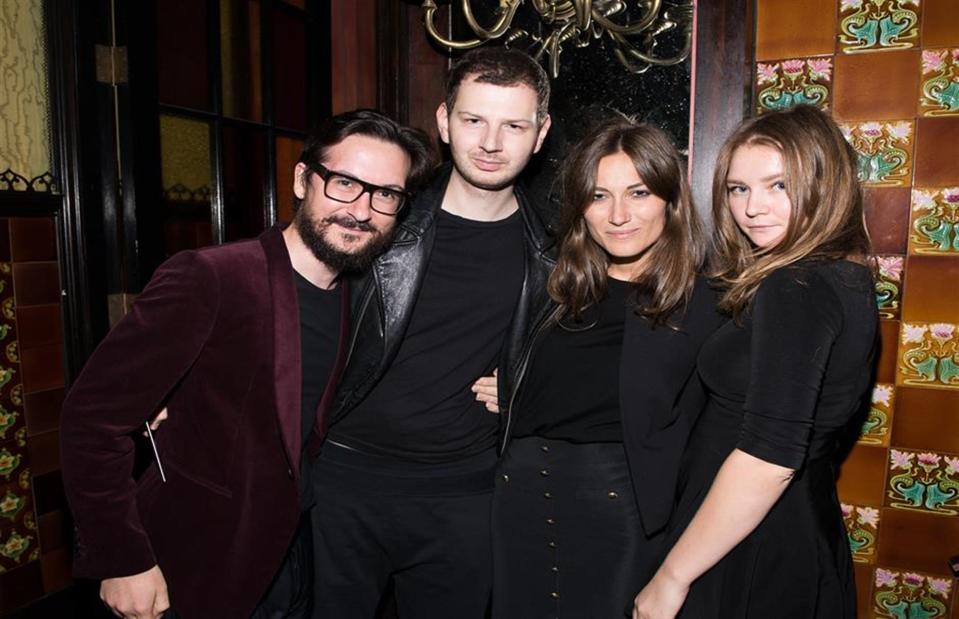
Dave Kotinsky/Getty Images
Russia-born German Anna Sorokin fooled New York's elite when she posed as a German heiress called Anna Delvey, who supposedly had a $66 million (£54m) trust fund. Living a jet-set lifestyle, Sorokin/Delvey stayed at top hotels for months on end, partied with the rich and famous, and took extravagant holidays, all while documenting her high life on Instagram. Sorokin, now in her thirties, successfully kept up her charade for several years by forging financial documents.
Sorokin (pictured right) told friends about her desire to create a $40 million (£32m) members-only arts centre and attempted to persuade a hedge fund into giving her a $22 million (£18m) loan to achieve it. While she failed in this particular bid, Sorokin did get one bank to give her a $100,000 (£82k) overdraft. Her lies soon began to catch up with her, and in July 2017 she was arrested over two unpaid hotel bills and a restaurant tab. The wannabe socialite was then arrested again four months later...
Anna Sorokin
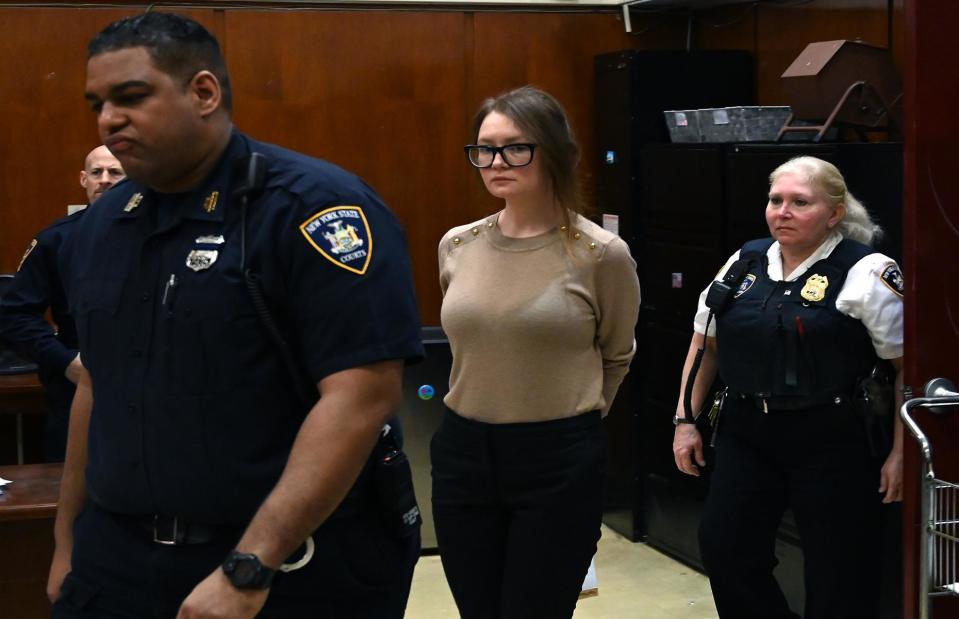
Timothy A Clary/AFP/Getty Images
The story started to receive international attention in 2018 when writer Jessica Pressler wrote a feature for New York Magazine about Anna Sorokin's extravagant life and lies as Anna Delvey. Sorokin's courtroom antics stoked further interest. She hired a stylist and once refused to appear because she was unhappy with her outfit. She was convicted of theft of services and grand larceny in 2019 and sentenced to 12 years in jail. In February 2021, Sorokin was released from prison early for good behaviour, but her story is far from over.
The tale of the phoney heiress was turned into a Netflix series called Inventing Anna, with Sorokin reportedly receiving a $320,000 (£263k) fee from Netflix. However, due to a New York law that stops criminals profiting from their criminality, her accounts were frozen and the money was used to pay back the victims of her con, along with fines and attorney fees.
And what about Anna Delvey? Sorokin has continued posting from her old @theannadelvey Instagram account and has launched several websites including DelveyMail.com, a blog called Anna Delvey Diaries, and a site selling prints of original art by Sorokin. In June 2022, she launched a collection of NFTs, and in September last year she hosted an event on the roof of her apartment during New York Fashion Week. She was seen sporting an electronic ankle tag during the bash, as she remains under house arrest.
Shimon Hayut
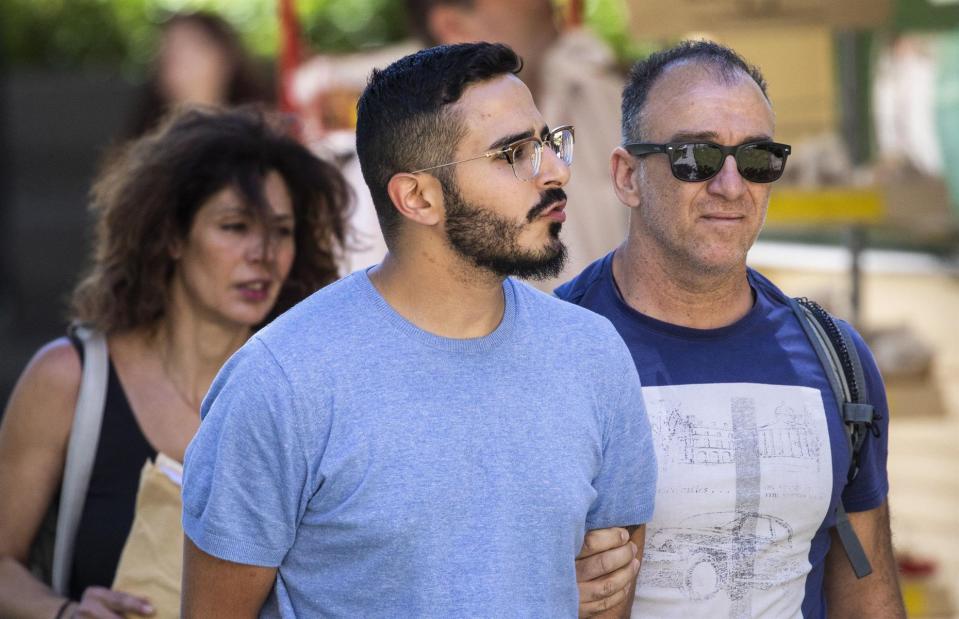
NTB/Alamy Stock Photo
Shimon Hayut has gone by many monikers. Posing as "prince of diamonds" Simon Leviev, and now known as the Tinder Swindler, Hayut defrauded several women out of hundreds of thousands of dollars each. He found his targets via the dating app Tinder, hence his nickname, where he claimed to be the billionaire son of Russian-Israeli diamond mogul Lev Leviev.
After matching with women on Tinder, Hayut took them out on expensive dates to convince them of his super-rich status. He even hired people to pose as his business partners, bodyguards and personal assistants. From 2015 to 2019, he targeted women in Finland, Norway, and Denmark, asking his dates to take out loans and credit cards on his behalf so he could "protect himself" from powerful "enemies".
Shimon Hayut

David M. Benett/Contributor/Getty Images
Hayut was initially caught and imprisoned in Finland in 2015 but resumed his scam after being released. He was arrested and jailed again in Israel in 2019, serving just five months of his 15-month sentence. Some of the women he defrauded – Cecilie Fjellhoy, Pernilla Sjoholm and Ayleen Charlotte – have worked together to bring him to justice.
His victims are the focus of The Tinder Swindler, a true-crime Netflix documentary about Hayut's scam, which claims he made a staggering $10 million (£8.2m). The women also set up a GoFundMe page to pay off their debts, which Hayut has since criticised, writing on Instagram: "Go ahead and help real associations... not these manipulators."
Lyne Barlow
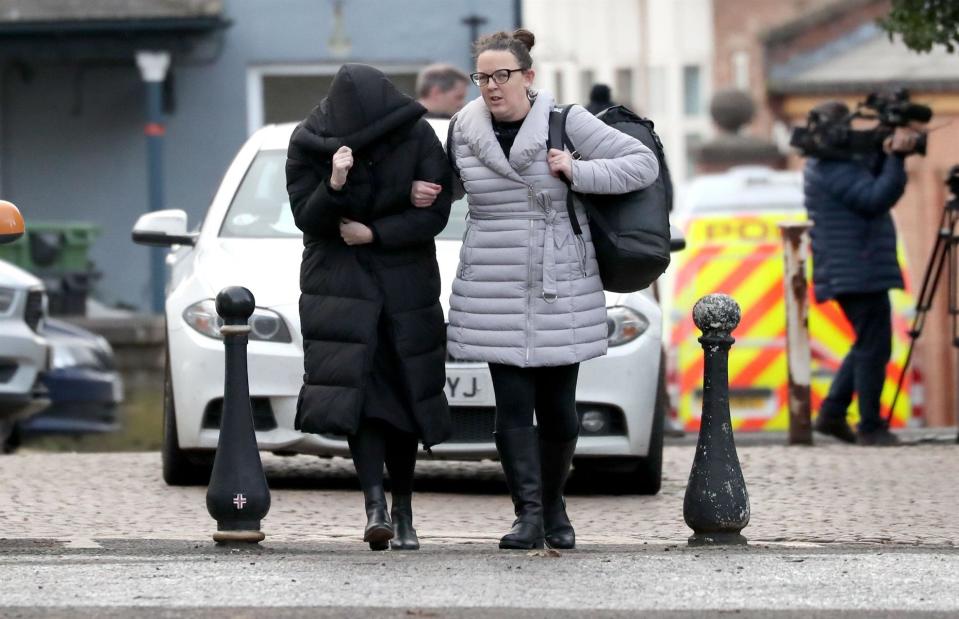
PA Images / Alamy Stock Photo
Dubbed 'the Sunshine Scammer' by the BBC, British fraudster Lyne Barlow (pictured left) fleeced more than $2 million (£1.6m) from family, friends and 1,400 strangers between 2019 and 2020. Barlow, who lived in County Durham, UK, started by stealing around $600,000 (£500k) from her own mother, who'd inherited the money following the death of Barlow's father. According to a BBC documentary, Barlow took control of the funds, telling the bank her mother was too bereaved to manage the money herself.
Friends quickly noticed that Barlow was living a life of luxury, jetting off on expensive holidays to Mexico and Dubai, buying designer clothes, and hosting elaborate parties. Barlow explained the wealth by claiming she was profiting from her husband's business, and she started encouraging people close to her to invest in his company. There was just one catch: Barlow never actually invested the funds and instead spent the money on herself while promising generous dividends that her friends would never see.
And that wasn't the end of Barlow's deceit. She set up her own fraudulent travel agency, enticing customers with deals that seemed too good to be true. They were. Customers reported driving 300 miles to their holiday destination before being informed there were no bookings in their name, while others claimed Barlow paid for just three days of what was supposed to be a two-week all-inclusive trip.
Lyne Barlow
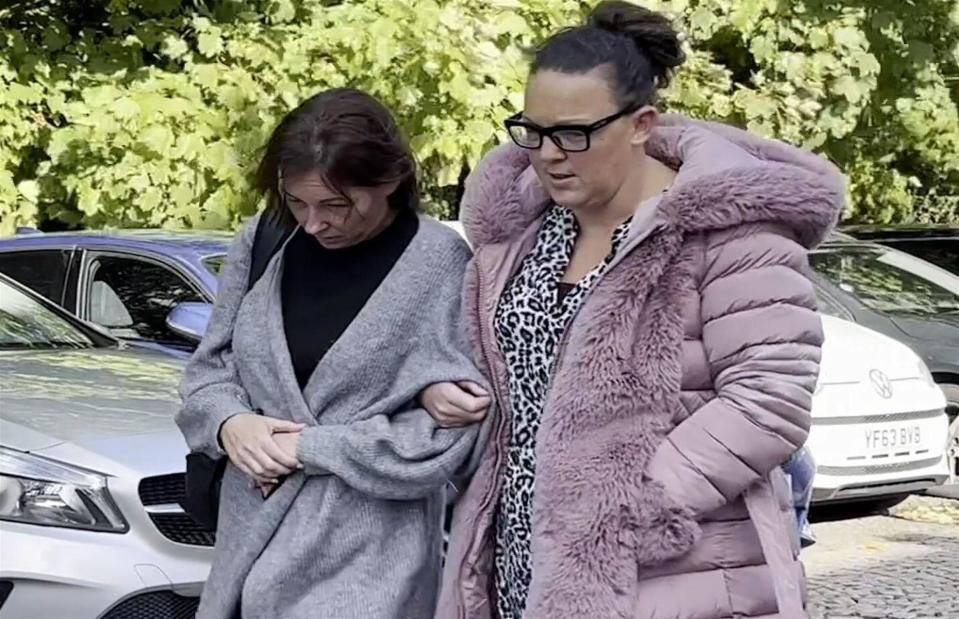
PA Images/Alamy Stock Photo
As betrayed holidaymakers started hounding Barlow for their money, the police quickly became involved. The fraudster told officers she had cancer and wore a headscarf to create the illusion she'd lost her hair during chemotherapy. Even her friends and family members believed she was seriously ill, and as the COVID-19 pandemic hit, police decided it was too risky for Barlow to be taken into custody. In the months that followed, she carried on defrauding customers until Durham Police, which received hundreds of complaints from Barlow's customers, eventually decided they had no choice but to take her in for questioning.
Surprisingly, Barlow quickly admitted to the scam and told officers she didn't really have cancer. Saying she was pleased to have been found out and was disgusted by her actions, Barlow was sentenced to over nine years in jail for 10 counts of fraud, money laundering, and stealing from her mother. Her mother later released a statement saying: "The financial loss although significant is nothing in comparison to losing my family. I hope in the future there can be some reconciliation as life is so precious. I will love her until my last breath."
Now discover the world's most counterfeited currencies

 Yahoo Finance
Yahoo Finance 